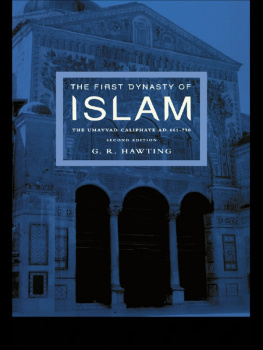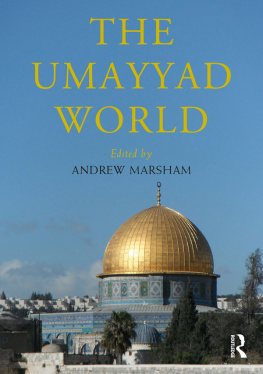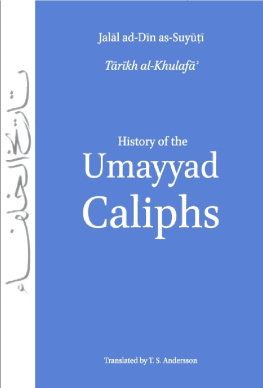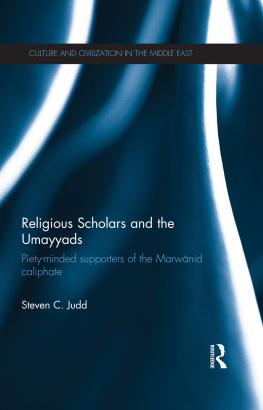The First Dynasty of Islam
The period 661750 AD was a crucial one for the history of Islam and the Middle East. The territories conquered by the Muslims in the Middle East, north Africa and Spain were ruled from Syria by a succession of caliphs belonging to the Umayyad family, the first caliphal dynasty to emerge in the history of Islam. Under their rule the region began a process of transformation which eventually led to the emergence of Islam, both as a religion and as a culture, in its classical form.
The First Dynasty of Islam provides a succinct and accessible introduction to the Umayyad period. An introductory chapter discusses the importance of the era as a whole, with further chapters examining
- the Umayyad family and its rise to the Caliphate
- the Sufyanids
- the second civil war
- ?bd al-Malik and al-Hajjaj
- the development of factionalism and the problems of Islamisation
- the third civil war and the caliphate of Marwan II
- the overthrow of the Umayyad caliphate
The first edition established itself as a balanced and approachable text for undergraduates and others interested in the early history of Islam. This second edition, with an expanded and up-to-date bibliography, will prove even more useful to its intended readership.
G.R.Hawting is Senior Lecturer in the History of the Near and Middle East at the School of Oriental and African Studies, University of London.
The First Dynasty
of Islam
The Umayyad Caliphate AD 661750
Second edition
G.R.Hawting
First published 1986
by Croom Helm Ltd
Second edition published 2000
by Routledge
11 New Fetter Lane, London EC4P 4EE
Simultaneously published in the USA and Canada
by Routledge
29 West 35th Street, New York, NY 10001
Routledge is an imprint of the Taylor & Francis Group
This edition published in the Taylor & Francis e-Library, 2002.
1986, 2000 G.R.Hawting
All rights reserved. No part of this book may be reprinted or reproduced or utilised in any form or by any electronic, mechanical, or other means, now known or hereafter invented, including photocopying and recording, or in any information storage or retrieval system, without permission in writing from the publishers.
British Library Cataloguing in Publication Data
A catalogue record for this book is available from the British Library
Library of Congress Cataloging in Publication Data
A catalog record for this book has been requested
ISBN 0-415-24073-5 (Pbk)
ISBN 0-415-24072-7 (Hbk)
ISBN 0-203-13700-0 Master e-book ISBN
ISBN 0-203-17692-8 (Glassbook Format)
Conventions
| Dates | Unless there is a particular reason for providingthe Islamic, hijri date, all dates are AD. |
| References | In the notes to the text, given at the end of eachchapter, references are usually to the name ofthe author or editor and a short form of the titleof the work. Full titles, together with date andplace of publication, are provided in thebibliography. See the list of abbreviations forthe titles of journals, etc. |
| Transliteration | A full scholarly transliteration is not provided in the text but the bibliography and index are translit-erated. The bibliography reproduces the various methods of transliteration used by the authors cited. My transliteration follows the system of the Encyclopaedia of Islam, with the few modifications customary in works in English. On the whole, readers without any Arabic will safely ignore the transliteration symbols, but may wish to note the following: = the Arabic letter ayn, a guttural sound produced by constricting the larynx; = the hamza, a glottal stop like the tt in the Cockney pronunciation of butter; vowels are short unless they have a macron () over them; ibn (abbreviated to b. in the middle of a name) = son of; B. (abbreviation of Banu) = descendants of, family of, clan of, tribe of, as appropriate. |
Abbreviations
| AIEOr. | Annales de lInstitut des tudes Orientales |
| AIUON | Annali, Istituto Universitario Orientate di Napoli |
| AJSL | American Journal for Semitic Languages and Literatures |
| BSOAS | Bulletin of the School of Oriental and African Studies |
| BZ | Byzantinische Zeitschrift |
| CMedH | Cambridge Mediaeval History |
| EI1 | Encyclopaedia of Islam, 1st edition |
| EI2 | Encyclopaedia of Islam, 2nd edition |
| GS | I.Goldziher, Gesammelte Schriften |
| IC | Islamic Culture |
| IJMES | International Journal of Middle East Studies |
| IOS | Israel Oriental Studies |
| IQ | Islamic Quarterly |
| Isl. | Der Islam |
| JA | Journal Asiatique |
| JAOS | Journal of the American Oriental Society |
| JESHO | Journal of the Economic and Social History of the Orient |
| JRAS | Journal of the Royal Asiatic Society |
| JSAI | Jerusalem Studies in Arabic and Islam |
| JSS | Journal of Semitic Studies |
| MW | Muslim World |
| PPHS | Proceedings of the Pakistan Historical Society |
| Rend. Linc. | Rend. Linc. Rendiconti dell Accademia Nazionale dei Lincei, Classe di scienze morali, storiche e filologiche |
| RH | Revue Historique |
| RHR | Revue de lHistoire des Religions |
| RO | Rocznik orientalistyczny |
| RSO | Rivista degli studi orientali |
| SI | Studia Islamica |
| WI | Die Welt des Islams |
| ZA | Zeitschrift fr Assyriologie |
| ZDMG | Zeitschrift der deutschen morgenlndischen Gesellschaft |
| amir | commander; an army leader and/or governor ofa province |
| amir al-muminin | Commander of the Believers; a title of the caliph |
| ashraf | leading members of the leading families amongthe Arab tribesmen |
| barid | the system of communications between theprovinces and the caliphal court |
| baya | the pledge of allegiance given to a caliph, heirapparent, or contender for power |
| dar al-islam | the regions under Muslim government in contrastto the dar al-harb (house of war) |
| dawa | call, propaganda; the movement whichprepared the way for the Abbasid takeover of thecaliphate |
| dinar | the gold coin |
| dirham | the silver coin |
| diwan | the register of individuals entitled to pay orpension from the government; a governmentdepartment |
| fils | the copper coin |
| fiqh | the theory of Islamic law (not the law itself, thesharia) |
| fitna | conflict within the Muslim community, especiallythat between Ali and Muawiya |















